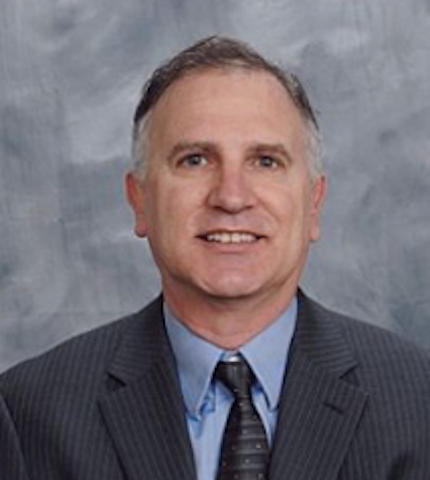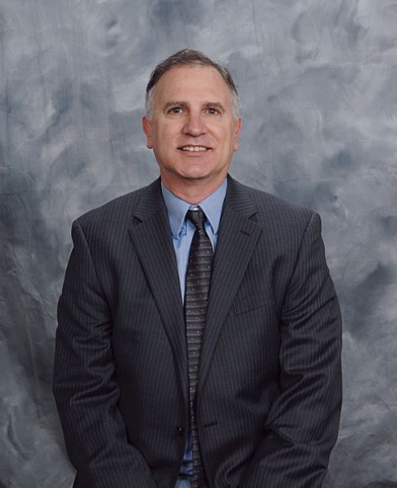 At this year’s HIMSS conference, interoperability was again one of the hottest topics of discussion. Interoperability was even a featured showcase at the HIMSS Interoperability Showcase. Yet the lack of interoperability in HealthIT remains. "HealthIT is not unique in its interoperability woes and other industries, including the automotive industry, are still struggling with associated safety issues."
At this year’s HIMSS conference, interoperability was again one of the hottest topics of discussion. Interoperability was even a featured showcase at the HIMSS Interoperability Showcase. Yet the lack of interoperability in HealthIT remains. "HealthIT is not unique in its interoperability woes and other industries, including the automotive industry, are still struggling with associated safety issues."
Bennett Lauber
See the following -
Alfred Hitchcock and the Future of Health IT
 Health IT is like the early Beatles. There are some really great applications out there, and in theory they should help to improve the lives of those that use them. In practice, there are a number of fundamental flaws that stem from not fully understanding the power of the technology that is used to present solutions to doctors and patients. We need to be more like Alfred Hitchcock! We are currently at the “elbow” of an exponential growth curve of mobile, connected applications. For a mobile application to be successfully in this new world, it needs to fully embrace the connected mobile technology and the power that a ubiquitous high speed network, that connects to a light weight, vibrating, touch screen, GPS, an accelerometer, camera, speakerphone, microphone, Bluetooth enabled device, along with serious amounts of computing power and data (and cloud) storage.
Health IT is like the early Beatles. There are some really great applications out there, and in theory they should help to improve the lives of those that use them. In practice, there are a number of fundamental flaws that stem from not fully understanding the power of the technology that is used to present solutions to doctors and patients. We need to be more like Alfred Hitchcock! We are currently at the “elbow” of an exponential growth curve of mobile, connected applications. For a mobile application to be successfully in this new world, it needs to fully embrace the connected mobile technology and the power that a ubiquitous high speed network, that connects to a light weight, vibrating, touch screen, GPS, an accelerometer, camera, speakerphone, microphone, Bluetooth enabled device, along with serious amounts of computing power and data (and cloud) storage.
- Login to post comments
Car Crashes, Auto Bumpers, and HealthIT Interoperability
- Login to post comments
Crash Test Dummies and Electonic Health Records
 EHR vendors are quick to say that the upcoming stage 3 Meaningful Use requirements are too burdensome, that they are too difficult to complete, and they are not necessary. (see this article for example). Many EHR vendors would say let market forces take over and the Health IT industry will heal itself. The big business interests of the Healthcare industry may cry wolf (and lobby hard) against the meaningful use program and its significant enhancements to the usability program because they don’t want to spend the extra time and money to provide a healthcare system that truly follows a safety-enhanced design philosophy.
EHR vendors are quick to say that the upcoming stage 3 Meaningful Use requirements are too burdensome, that they are too difficult to complete, and they are not necessary. (see this article for example). Many EHR vendors would say let market forces take over and the Health IT industry will heal itself. The big business interests of the Healthcare industry may cry wolf (and lobby hard) against the meaningful use program and its significant enhancements to the usability program because they don’t want to spend the extra time and money to provide a healthcare system that truly follows a safety-enhanced design philosophy.
- Login to post comments
EHR Usability Gaps -- ONC and AHRQ Identify Serious Shortcomings of Certified EHRs
 The Health Information Technology for Economic and Clinical Health (HITECH) Act provided providers with a significant financial incentive to increase the adoption and use of EHRs. EHR vendors were required to conduct and report on a summative usability evaluation of their system as part of the Stage 2 Meaningful Use program (The ONC 2014 Edition Certification). However, a recent report funded by the Agency for Healthcare Research and Quality (AHRQ), identified several “issues” with the certified EHR vendors in the processes, practices and use of standards and best practices with regard to usability and human factors.
The Health Information Technology for Economic and Clinical Health (HITECH) Act provided providers with a significant financial incentive to increase the adoption and use of EHRs. EHR vendors were required to conduct and report on a summative usability evaluation of their system as part of the Stage 2 Meaningful Use program (The ONC 2014 Edition Certification). However, a recent report funded by the Agency for Healthcare Research and Quality (AHRQ), identified several “issues” with the certified EHR vendors in the processes, practices and use of standards and best practices with regard to usability and human factors.
- Login to post comments
Jean Piaget & the Usability of Healthcare Software
 The usability of healthcare software, or lack thereof, has been a topic of discussion for several years. The problem has become so widespread that the American Medical Association (AMA) has recently issued a framework for improving the ease of use of EHRs that, in part, includes the reduction of 'cognitive load.' Piaget’s theories can be applied to understanding some of the reasons why many EHRs are just too hard to use. They can provide guidance for finding ways to reduce the cognitive workload that so often hinders the user experience of EHR systems. Read More »
The usability of healthcare software, or lack thereof, has been a topic of discussion for several years. The problem has become so widespread that the American Medical Association (AMA) has recently issued a framework for improving the ease of use of EHRs that, in part, includes the reduction of 'cognitive load.' Piaget’s theories can be applied to understanding some of the reasons why many EHRs are just too hard to use. They can provide guidance for finding ways to reduce the cognitive workload that so often hinders the user experience of EHR systems. Read More »
- Login to post comments
Nine types of Usability Problems w/EHRs
 There is no shortage of complaints about the usability of Electronic Health Record systems (EHRs). More and more evidence is emerging regarding the lack of EHR usability. Speaking at the 2013 Healthcare Information and Management Systems Society (HIMSS) Conference & Exhibition, Michael S. Barr, MD, MBA, FACP, of the National Committee for Quality Assurance (NCQA) warned that: “Satisfaction and usability ratings for certified electronic health records (EHRs) have decreased since 2010 among clinicians across a range of indicators.” Barr’s presentation at HIMSS focused on “ the need for the Meaningful Use program and EHR manufacturers to focus on improving EHR features and usability.”
There is no shortage of complaints about the usability of Electronic Health Record systems (EHRs). More and more evidence is emerging regarding the lack of EHR usability. Speaking at the 2013 Healthcare Information and Management Systems Society (HIMSS) Conference & Exhibition, Michael S. Barr, MD, MBA, FACP, of the National Committee for Quality Assurance (NCQA) warned that: “Satisfaction and usability ratings for certified electronic health records (EHRs) have decreased since 2010 among clinicians across a range of indicators.” Barr’s presentation at HIMSS focused on “ the need for the Meaningful Use program and EHR manufacturers to focus on improving EHR features and usability.”
- Login to post comments
On the Need to Improve User-Centered Design (i.e. Design Thinking) for Healthcare IT Usability
 The lack of usability of electronic health records (EHRs) and healthcare IT applications, in general, has been in the news a lot again. This time it is a research report published in the Journal of the American Medical Association (JAMA) on March 27. The study analyzed voluntary error reports associated with EHR systems and found that problems with EHR usability may have directly resulted in patient harm. Unfortunately, this situation is all too common in the healthcare industry. Numerous health care systems are designed and created ad hoc, or with a very engineering-centric approach. End users are dissatisfied and often systems or workflows are abandoned and/or dangerous work-a-rounds created. A lot of people are saying Healthcare IT needs a disruption. What HealthIT needs is to begin to learn about and understand the needs, goals, and methods of the actual end-users, like doctors, nurses, medical assistants, etc.
The lack of usability of electronic health records (EHRs) and healthcare IT applications, in general, has been in the news a lot again. This time it is a research report published in the Journal of the American Medical Association (JAMA) on March 27. The study analyzed voluntary error reports associated with EHR systems and found that problems with EHR usability may have directly resulted in patient harm. Unfortunately, this situation is all too common in the healthcare industry. Numerous health care systems are designed and created ad hoc, or with a very engineering-centric approach. End users are dissatisfied and often systems or workflows are abandoned and/or dangerous work-a-rounds created. A lot of people are saying Healthcare IT needs a disruption. What HealthIT needs is to begin to learn about and understand the needs, goals, and methods of the actual end-users, like doctors, nurses, medical assistants, etc.
- Login to post comments
OSEHRA 2014 Summit to Rock EHR World
 The world of electronic health records (EHRs) is going to be rocked next month as the Open Source Electronic Health Record Alliance (OSEHRA) holds its third annual summit in Bethesda, Maryland. After four years of quietly building a organization to promote VistA and open source in healthcare, as well as a central host for the core VistA code, OSEHRA is now emerging as a major force in the world of EHRs. The conference has become a gathering place for not just the VistA community but for major health IT players in the federal government, including the US Department of Veterans Affairs (VA), and Indian Health Service (IHS), and major forces in the open health field. The three-day conference will feature more than 120 speakers addressing 90 separate sessions. Read More »
The world of electronic health records (EHRs) is going to be rocked next month as the Open Source Electronic Health Record Alliance (OSEHRA) holds its third annual summit in Bethesda, Maryland. After four years of quietly building a organization to promote VistA and open source in healthcare, as well as a central host for the core VistA code, OSEHRA is now emerging as a major force in the world of EHRs. The conference has become a gathering place for not just the VistA community but for major health IT players in the federal government, including the US Department of Veterans Affairs (VA), and Indian Health Service (IHS), and major forces in the open health field. The three-day conference will feature more than 120 speakers addressing 90 separate sessions. Read More »
- Login to post comments
The Top 5 EHR Usability Problems and How to Fix Them
 This year at HIMSS in Las Vegas there was no shortage of talk about the “lack of usability” in EHRs. In the final HIMSS16 show daily (Thursday March 3, 2016) there were four articles (“When EHRs cause Harm,” “5 UX steps to Healthy Clinical apps,” “Nurse: We face severe IT usability problems,” and “The leading health IT issues? Poor usability and missing safeguards”) that addressed some aspect of EHR usability...Over the past few years we’ve worked with a number of EHR vendors on improving the usability of their solutions. We’ve noticed a number of items that seem to common to many of the systems, and this list contains some of the most common and highest priority usability issues that should be avoided in your EHR designs.
This year at HIMSS in Las Vegas there was no shortage of talk about the “lack of usability” in EHRs. In the final HIMSS16 show daily (Thursday March 3, 2016) there were four articles (“When EHRs cause Harm,” “5 UX steps to Healthy Clinical apps,” “Nurse: We face severe IT usability problems,” and “The leading health IT issues? Poor usability and missing safeguards”) that addressed some aspect of EHR usability...Over the past few years we’ve worked with a number of EHR vendors on improving the usability of their solutions. We’ve noticed a number of items that seem to common to many of the systems, and this list contains some of the most common and highest priority usability issues that should be avoided in your EHR designs.
- Login to post comments
Usability, Accessibility and Telehealth
 This month there are two healthcare conferences that we will be attending here in Washington DC. One is the American Telehealth Association’s Fall forum and the other is The Interagency Committee on Disability Research (ICDR)’s Accessibility and Usability in Health Information Technology (HIT)...The ATA Fall Forum focuses on specific telemedicine topics and allows attendees to network and make lasting professional connections in a smaller-scaled environment. Tackle telemedicine, telehealth and mHealth industry issues right at the health care policy epicenter, Washington, DC.
This month there are two healthcare conferences that we will be attending here in Washington DC. One is the American Telehealth Association’s Fall forum and the other is The Interagency Committee on Disability Research (ICDR)’s Accessibility and Usability in Health Information Technology (HIT)...The ATA Fall Forum focuses on specific telemedicine topics and allows attendees to network and make lasting professional connections in a smaller-scaled environment. Tackle telemedicine, telehealth and mHealth industry issues right at the health care policy epicenter, Washington, DC.
- Login to post comments
OSEHRA 2015 Open Source Summit
The Open Source Electronic Health Record Alliance (OSEHRA) is pleased to announce that registration for its 2015 Open Source Summit: Community-Powered Healthcare IT Solutions, to occur July 29-31 at the Bethesda North Marriott Hotel and Conference Center, is now available. “In its fourth year, we are delighted that our annual Summit has grown exponentially in both size and significance,” said Dr. Seong Ki Mun, President of OSEHRA. “With an impressive technical program, respected plenary speakers, and unfettered access to open source leaders, the 2015 Summit is certain to draw a diverse and enthusiastic community of participants.
- Login to post comments